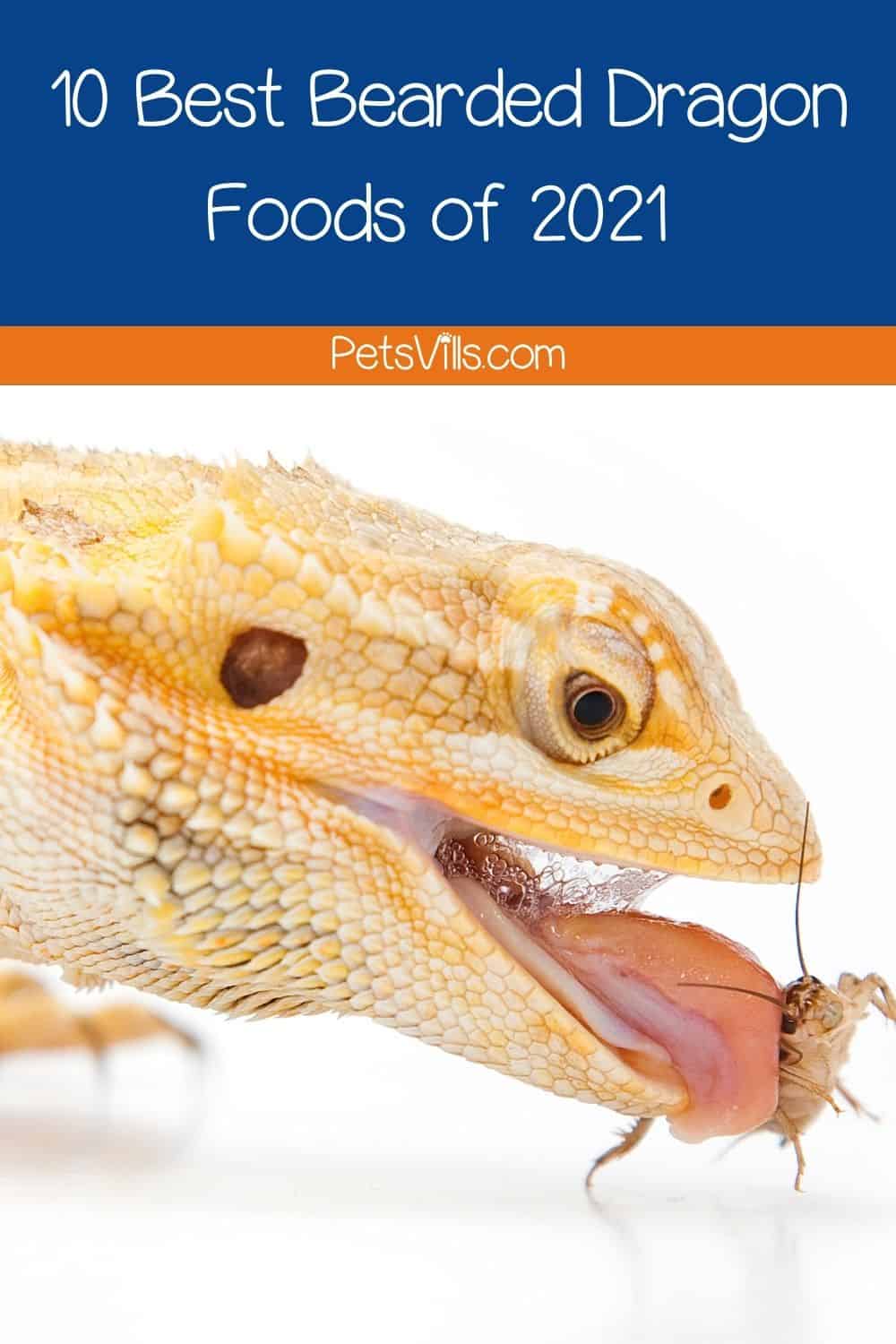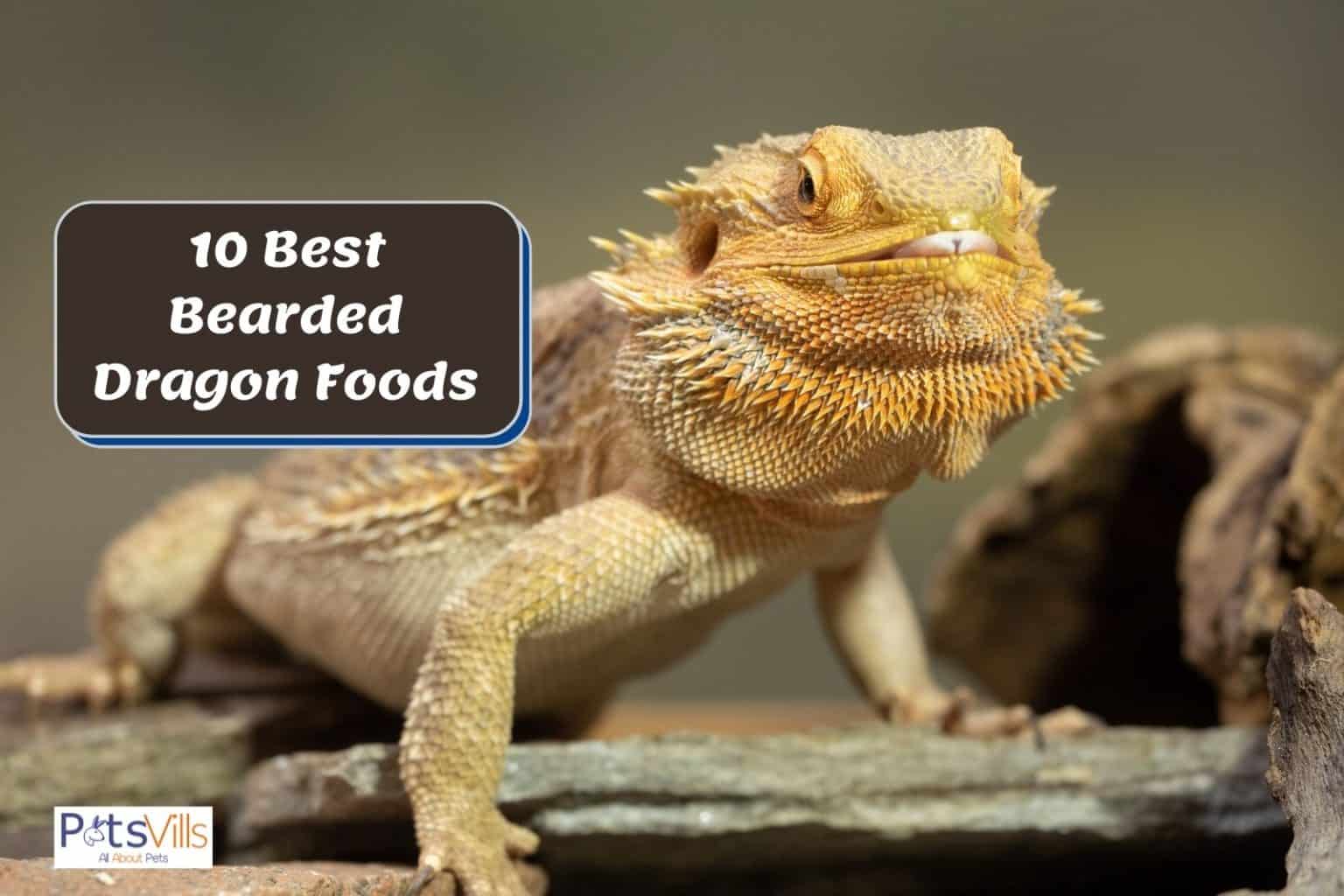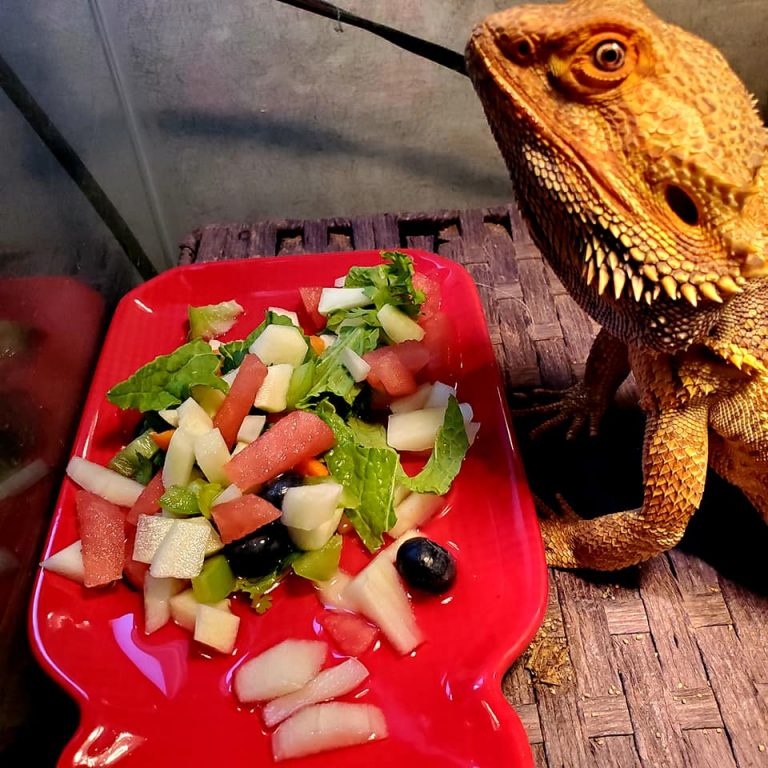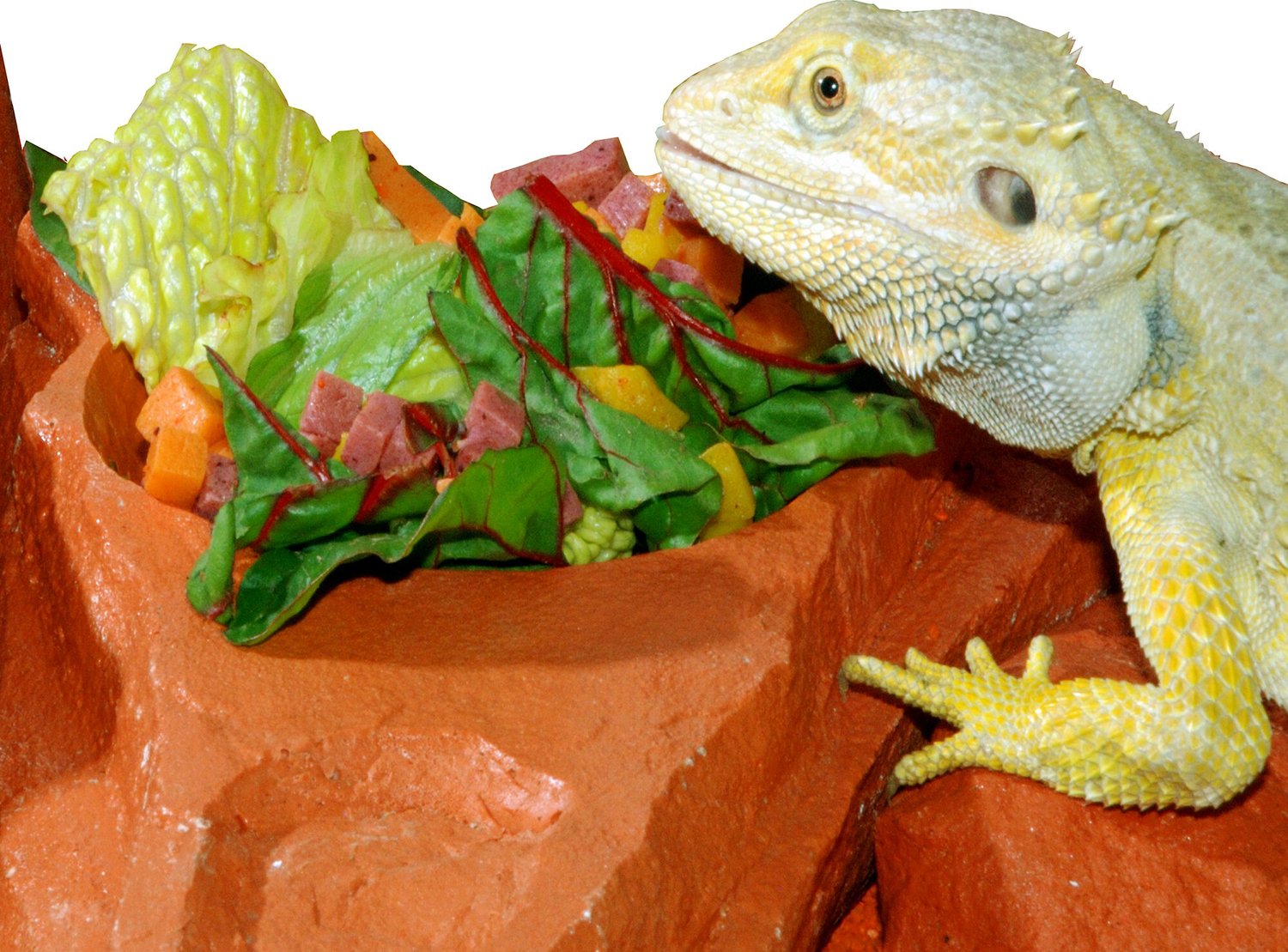
10 Best Bearded Dragon Food of 2023 (Review & Feeding Guide)
What bearded dragon food goes in their belly has an impact on how they feel, their quality of life, how active they are and even how they look. What Do Bearded Dragons Eat? Young bearded dragons are omnivorous (approximately 50% insects and 50% plant matter). As they mature, they will eat more vegetables and transition to mostly herbivorous.

Zoo Med’s Gourmet Bearded Dragon Food Amphibiens
Feeding your bearded dragon the RIGHT foods and maintaining a proper diet from an early age will help ensure they not only have plenty of years in life, but more importantly, plenty of life in their years! From crickets to squash, peaches, and even dandelions, bearded dragons have an extensive diet as omnivores. Because they can eat so many.

10 Best Bearded Dragon Food of 2023 (Review & Feeding Guide)
The Best Vegetables for Your Bearded Dragon Feeding veggies to your bearded dragon is a great way to ensure they have a well balanced and nutritive diet. The good news is, beardies can eat as many veggies as they want, all day, every day. So you never have to worry about your reptile growing fat from these garden goodies.

Zoo Med Juvenile Bearded Dragon Food Reptiles from Pond Ltd UK
Adult bearded dragons will eat more fruit and veggies than younger beardies. This is because juvenile bearded dragons are growing and need a diet that is higher in protein and fat. The table show how the diet needs change by age. Adult Dragons Young Dragons 80% Fruit, vegetables, and greens 20% Fruit, vegetables, and greens 20% Insects 80% Insects.

Zoo Med Adult Bearded Dragon Food Reptiles from Pond Ltd UK
The correct diet for a bearded dragon should contain protein, greens, vegetables and fruits. Feeding a balanced diet is vital for their health. Feed a split of 25% insects and vertebrates and 75% greens, vegetables, and fruits: Dubia roaches, earthworms, crickets and superworms. Collard greens, dandelion greens, kale, grapes, bananas.

REPCAL JUVENILE BEARDED DRAGON FOOD 340G ExoReptiles Malaysia
A bearded dragon needs at a minimum a 50-gallon tank, but ideally this should be 75 or 110-gallons. This tank needs to have a reptile carpet substrate, 2+ hides, basking spot perch, 70W heat lamp and a UVB basking bulb tube (10.0 10%+). The warm side of the tank under the heat lamp should have a basking spot and a hide.
Bearded Dragon Care Bearded Dragon Diet
Feeding too much lettuce can lead to diarrhea which in turn, worsens dehydration. Peeled cucumber is a better option in this scenario. Tomatoes can be fed to bearded dragons every now and then (like once every few months or so) in small amounts. Tomatoes are very acidic and can be difficult on their digestive system.

Bearded Dragon Food • Central Bearded Dragons
Bearded dragons are omnivores and can eat a variety of things. Normally your bearded dragon's diet will consist of vegetables, insects, and non-citrus fruit. When you give your beardie insects you will need to make sure that the insect isn't too big for your dragon to eat. If it is longer than the space between it's eyes, then it is too large.

The Proper Feeding Procedure And Top 5 Best Worms For Bearded Dragon
Juvenile bearded dragons (4-7 months old) Will need to eat 2-3 times a day - morning, late afternoon/early evening. Make sure your bearded dragon eats feeder bugs 2 times a day. Also, have a bowl with some greens and start offering some too. Subadult bearded dragons (7-12 months old) 1 time per day.

Baby Bearded Dragon Food List (2022 Guide) Reptilesly
Adult bearded dragons (over 18 months in age) require about 25% - 30% insect prey and about 70% - 75% plant matter in their diet. Always dust food items with a calcium supplement, and use a multi-vitamin supplement at least once per week. Always provide a bearded dragon with fresh, dechlorinated water daily.

baby bearded dragon diet chart Frieda Mosby
Baby bearded dragons should eat a diet containing 80% insects and 20% vegetation. They also need to eat smaller meals more times a day. Feed baby lizards insects three times a day, and allow them to eat as many insects as they want in a 10-15 minute period each time. Baby beardies can eat up to 60 insects each day.

Bearded Dragon Food • Central Bearded Dragons
1.6:1. High oxalate food, chop raw leaves/stalk. Cucumber. 1:1.5. Low in nutrition, offer little amounts for extra moisture. Peel and cut to small pieces. Kohlrabi. 1:1.9. Goitrogenic, offer raw and in small amounts once in 10 days or less, mixed with other greens/veggies.

Gourmet Bearded Dragon Food 15 oz The TyeDyed Iguana Reptiles and
Baby Bearded Dragon Diet. For younger bearded dragons, it is very important to keep their diets omnivorous with the right balance of plant and animal matter. Aim for a ratio of 80% insects to 20% greens and vegetables when feeding baby bearded dragons. This should ensure proper nutrient absorption.

NATURE ZONE Bites Bearded Dragon Food, 24oz bottle
Bearded dragons are omnivores, meaning that they eat both plants and animals. Generally when bearded dragons are very young, they eat 80% bugs and 20% plants, however sometimes people have trouble getting their dragons to eat any vegetables at all when they are young. Adult bearded dragons are nearly the exact opposite and their diet will.

Choosing Fruits and Vegetables For A Healthy Bearded Dragon Diet
In the wild, bearded dragons have been found to eat vegetation only when they reach 80-100 mm (3-4 inches) (Wotherspoon, 2007). Juvenile bearded dragons eat active prey and this is good for activity and exercise. Brown (2012) recommends juvenile bearded dragons should be fed 50% insects and 50% plant matter.

Zoo Med Natural Adult Bearded Dragon Food 10 oz eBay
Staple: A food you can feed your bearded dragon on a regular basis. It's a good idea to mix these up from week to week to provide nutritional diversity and a more balanced diet. Treat: Not a good food to feed regularly, but something that is okay to provide on an occasional basis. We recommend limiting these foods to 1-2 times per week.